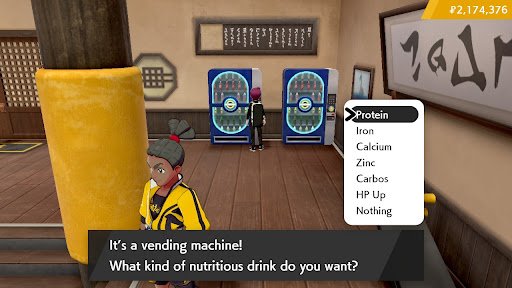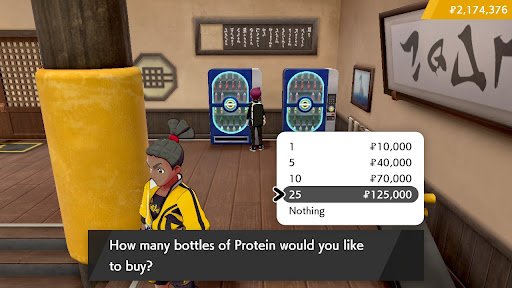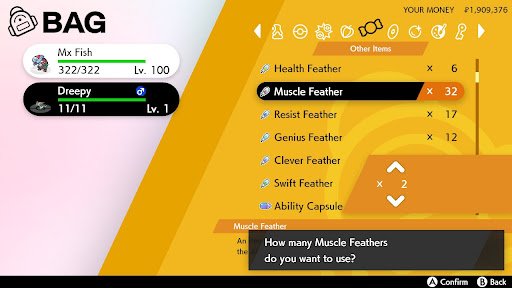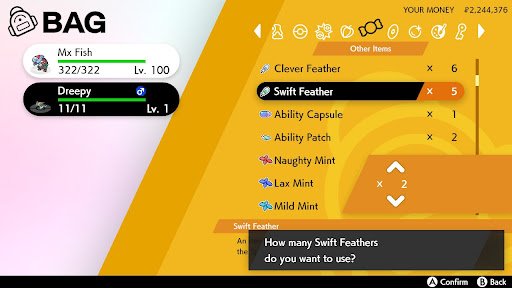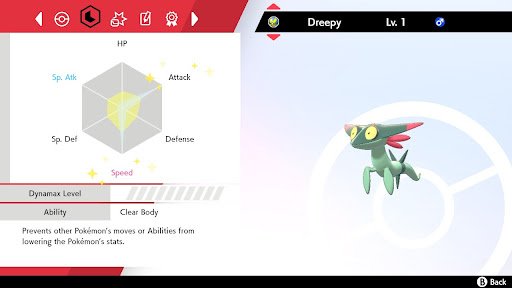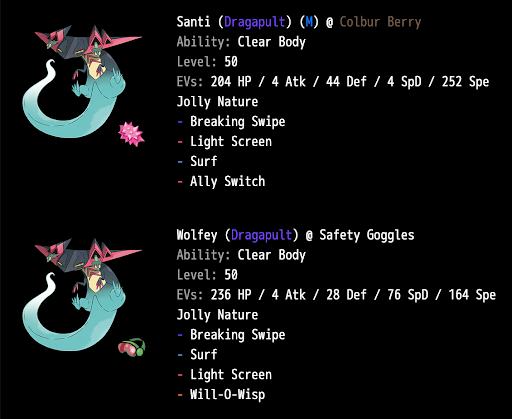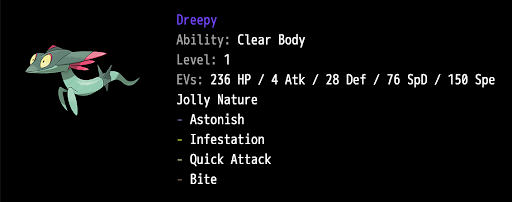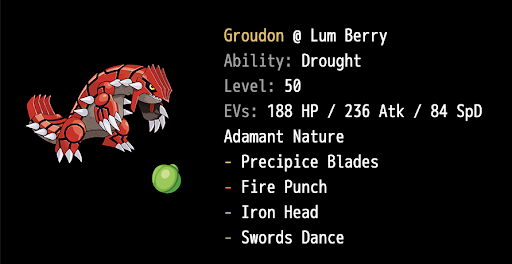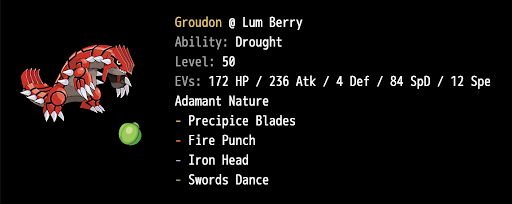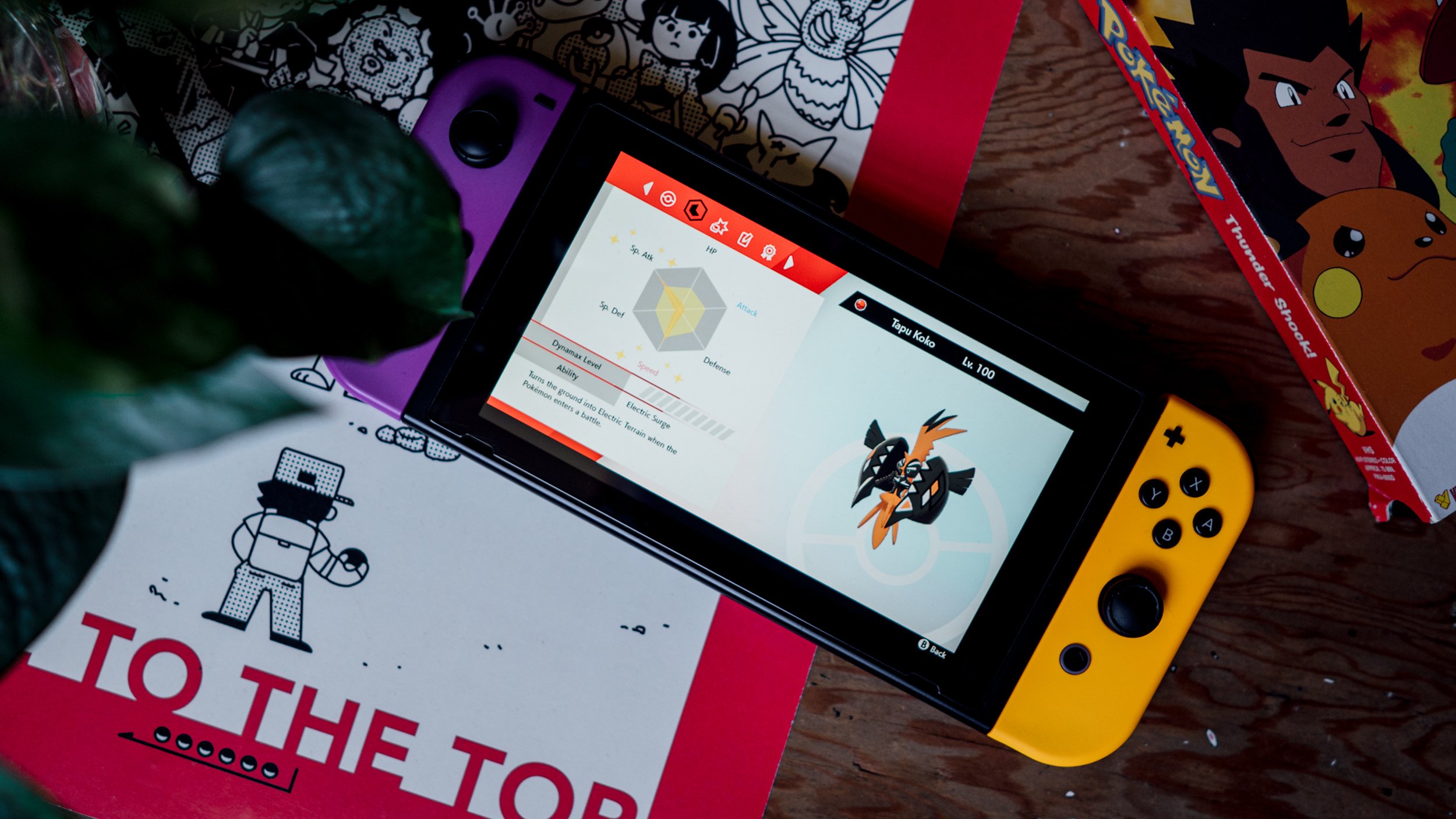
EV Training
13min 50sec read
Written by Max Gelman
Effort Values, or EVs for short, are some of the most powerful tools available for all forms of competitive Pokémon battling, and for VGC in particular. The multitude of ways you can customize your Pokémon through EV training can vastly change its role on a team.
Throughout Sword and Shield VGC formats, one prominent example has been Dragapult. If we think back to early VGC on the Switch, many Dragapults would run an EV spread to maximize their Attack and Speed stats. These Dragapults would primarily function as offensive threats and take advantage of Dynamax, putting a lot of pressure on opposing trainers.
But as time went on, Dragapult also found a role as a supportive Pokémon, most notably on teams centered around Coalossal. In both Players Cup 1 and Players Cup 2, the winning squads each featured a Dragapult with more EVs invested into their HP and Defense stats than attack.
Many Pokémon throughout VGC history have seen their roles shift depending on how they’re EV’ed. For an in-depth explanation of how and why EV training can do this, check out this video here. But how do we actually EV train our Pokémon to prepare them for VGC battles? Keep on reading to find out!
The Vitamin and Feather Method
Essentially, EVs are stat point increases. The more EVs you put into a certain stat for a Pokémon, the higher the corresponding stat will be. In your Sword and Shield games, different items will give your Pokémon these EVs, or they can be collected by defeating wild Pokémon. For a detailed explanation of EV mechanics, check out these articles from Serebii here and here. Note that all VGC battles take place at Level 50 instead of Level 100.
What you need to know for VGC purposes is that every Pokémon can earn a maximum of 510 EVs, and utilize 508 EVs (because it’s the nearest multiple of 4). Each stat can gain a maximum of 252 EVs, meaning you can only fully train two stats per Pokémon. At Level 50, a stat will increase by one point after it gains its first four EVs, and then continue to increase by one point after every eight EVs. In other words, your Pokémon will get one extra point in the Speed stat at 4, 12, 20, 28 EVs and so on.
In the Dragapult example I mentioned earlier, trainers would typically give their Dragapults 252 EVs in Attack and 252 EVs in Speed. That still left 4 usable EVs remaining — trainers generally put these in HP or one of the defensive stats to gain the extra stat point, rather than use a Dragapult with only 504 EVs.
There are several ways to EV train your Pokémon in Sword and Shield, but we’re going to recommend a method involving vitamins and feathers. With the right resources, EV training can become a seemingly daunting task into something that takes only a few minutes.
Vitamins have existed in Pokémon games since Generation 1, but Sword and Shield marked the first games where there is no limit to how many vitamins you can give your Pokémon. This can make EV training quick and easy!
There are six types of vitamins, each of which give 10 EVs in a single stat:
HP Up — HP
Protein — Attack
Iron — Defense
Calcium — Special Attack
Zinc — Special Defense
Carbos — Speed
Feathers, meanwhile, have been around since Generation 5 when they were called Wings. Like vitamins, there are six types of feathers. But these only give 1 EV for their corresponding stats:
Health Feather — HP
Muscle Feather — Attack
Resist Feather — Defense
Genius Feather — Special Attack
Clever Feather — Special Defense
Swift Feather — Speed
In order to purchase vitamins, you’re going to need a lot of money and Watts. To quickly obtain these things, as well as the best places to find Feathers, check out this article on finding items.
Once you have all the resources you need, and you know the spread you want, it’s time to EV train! Let’s say you saw how powerful an offensive Dragapult could be and want to use one on your own team. You’ve already bred your Dreepy for the right IVs, Nature and Ability, and you’re ready to go. Here is my Dreepy that I’ll EV train along with you:
To get a Dragapult with the classic 252 Attack, 252 Speed, 4 HP EV spread, I’ll need to purchase 25 Proteins and 25 Carbos. I can do so through the Pokeshop nearest the entrance to Wyndon or at the vending machines in the Isle of Armor Dojo. (To obtain the vending machines, be sure to check out the item primer guide and the Watts Section — you’ll need 400,000 Watts.) Because the Dojo offers vitamins at a lower price when buying in bulk, I’ll head over there.
Make sure your Dreepy is in your party when you give them vitamins and feathers! This can’t be done from the box. After purchasing all the vitamins I need, I can go to my bag, select them and shove them down this baby’s tiny throat feed them to Dreepy. Luckily for us, we can give Dreepy all 25 Proteins at once, instantly raising its attack EVs to 250. To finish off the attack stat, feed your Dreepy two Muscle Feathers to push it to 252. We then repeat the same step for the speed stat with Carbos and Swift Feather.
(Note: You can also save your Feathers by using 26 Proteins instead of 25. Because the EV cap is 252, you won’t push your Dreepy to 260 Attack EVs — it will simply stop at 252.)
To wrap up your Dreepy’s EV training, feed it an HP Up or four Health feathers. And that’s it! You now have a fully EV trained Dreepy that’s ready to be leveled up to a Dragapult. You can see that our mission has been a success by going to the Dreepy’s summary and pressing the Y button when looking at its stats. When a stat is EV’ed to its maximum, it will sparkle.
Not every Pokémon will be running one of these offensive spreads, which you may hear referred to as “max max.” As I mentioned earlier, there are many different ways to EV train a Pokémon, with Dragapult in particular able to fill a variety of roles on a team.
Let’s say instead of wanting to use Dragapult as an offensive threat, you wanted to build your own supportive Dragapult. You saw the power of Coalossal in the first two Players Cups and wanted to obtain all the Pokémon for yourself. If basing your own team off these two champions, your Dragapult spread is going to look a lot different than a “max max” Dragapult!
For example, the spreads on Santi’s and Wolfey’s Dragapults utilized more defensive EVs.
Rather than build an offensive Dragapult, let’s build Wolfey’s supportive Dragapult. We’ll need a different set of vitamins and feathers to do so, as the spread is much more intricate.
We’ll head back to the Isle of Armor vending machines and purchase vitamins in bulk. Notice that you can only buy vitamins in groups of 5, 10 or 25 if you don’t buy one at a time. Rather than 25 Proteins and 25 Carbos, we’ll instead select the option to buy 25 HP Ups, 15 Carbos, 10 Zinc and 5 Iron. These amounts will be the most efficient to EV train and save your cash.
When EV training something that isn’t “max max,” you’ll need to be careful to not go over the EVs you want. So, when building our own Wolfey Dragapult, let’s make sure we don’t go too quickly.
First, we can get the easy stuff out of the way. We’ll give Dreepy 23 HP Ups and six Health Feathers, getting the biggest amount of EVs off the table immediately. Then we can do the same for the speed stat, giving Dreepy 15 Carbos and 14 Swift Feathers. I personally prefer to EV one stat at a time, but you can give all the vitamins at once as well, feeding Dreepy the 23 HP Ups and 15 Carbos before giving the Feathers.
If you paid close attention to the previous screenshots, I actually don’t have enough Swift Feathers to complete this! If you’re in a time crunch, you may not have time to find extra Feathers and have to EV train through defeating wild Pokémon. I’ll explain more about this in a bit, but first let’s finish EV training the Dreepy’s other stats.
We now have a Dreepy with 236 HP EVs and 150 Speed EVs. For Attack, we don’t need any Protein and can simply give Dreepy four Muscle Feathers. For Defense, we can give either two Iron and eight Resist Feathers, or three Iron, using those extra two EVs out of the 510 available here. Then to finish, we feed Dreepy seven Zinc and six Clever Feathers.
Our Dreepy is almost finished! With all that vitamin and feather feeding we’ve been doing, our Dreepy’s EV spread now looks like this:
But we still need to finish EV training Dreepy’s speed stat. As I mentioned earlier, EVs can be earned by defeating Pokémon in the wild, so we’ll have to finish Dreepy’s training by doing that and finishing off the last of our Swift Feathers.
EV Training With Wild Pokémon
Every time your Pokémon earns experience, it doesn’t just get EXP. points — it also earns EVs. Each wild Pokémon gives out a certain number of EVs based on its species. In older games, EV training was largely accomplished by defeating dozens of wild Pokémon to get the desired stats, with the process expedited through multiplier methods like Power Items, Pokerus, the Macho Brace, Horde Battles and SOS Battles. Thankfully, we now have unlimited vitamin usage in Sword and Shield!
For EV training purposes in Sword and Shield VGC, you’ll likely only be battling wild Pokémon when you run out of Feathers, like what’s happened with this Dreepy. Fortunately, there are several locations we can utilize to defeat low-level wild Pokémon that each give out one EV point in a specific stat, making this as painless a process as possible.
With this Dreepy, we still need 11 more EVs in the speed stat to complete the Wolfey spread. Use the remaining three Swift Feathers you have, then fly to Route 1 and defeat 11 Rookidees. This way, we can earn the last three speed EVs after using up all our Feathers.
Here are our recommended EV training locations, should you need to do so in other stats. Each of these Pokémon give out one EV in their respective stats once they’ve been defeated.
Route 1:
HP: Skwovet
Def: Wooloo
Sp. Def: Nickit
Speed: Rookidee
Route 2:
HP: Skwovet, Yamper
Attack: Chewtle
Sp. Def: Nickit
Speed: Rookidee, Zigzagoon
Route 3:
Attack: Growlithe, Tyrogue
Def: Rolycoly
Sp. Def: Gossifleur
Speed: Zigzagoon, Trubbish, Stunky
Route 8, Steamdrift Way
HP: Snorunt
Sp. Atk: Snom
Speed: Sneasel
The Dreepy does not need to defeat the Pokémon itself. Thanks to the Generation 8 EXP. Share, it will earn EV points from wild Pokémon battles as long as it’s in your party. EV multipliers like Power Items and Pokerus (explained more in depth below) only apply to the Pokémon holding them.
And now the Dreepy is finished! You can double check that everything is correct by looking at this article here.
Resetting or Adjusting EVs
For most Pokémon, you’ll likely be starting from scratch when you’re EV training. But some Pokémon, such as Legendary Pokémon and Ultra Beasts, cannot be bred. If you had previously EV trained a Legendary Pokémon like Groudon, but want to use it on a new team with a new EV spread, you’ll have to either reset or adjust the Groudon’s EVs or catch a separate Groudon with a blank EV slate.
Sometimes, you won’t have the ability to catch a whole new Groudon. That’s OK! Only one is supposed to exist anyways, right? We can take our old Groudon and reset its EVs with a very simple method.
In the Isle of Armor DLC, Sword and Shield introduced an NPC that can completely wipe any Pokémon’s given EVs back to zero. All you need is 10 Armorite Ore, which can be acquired through Max Raid Battles on the Isle of Armor. This character is located on one of the islands near the Dojo, just off the coast.
There may be another scenario where the new Groudon EV spread you want is very similar to the old spread, and only needs a few simple adjustments. Rather than reset all of your EVs and start from scratch, there are certain Berries that can reduce the amount of EVs in a given stat. These effectively serve as anti-vitamins, reducing EVs by 10 in one stat:
Pomeg Berry — HP
Kelpsy Berry — Attack
Qualot Berry — Defense
Hondew Berry — Special Attack
Grepa Berry — Special Defense
Tamato Berry — Speed
Let’s say you want your Groudon to have less defensive EVs and more speed. If you know the amount of EVs you want to reduce, you can give your Pokémon the respective berries, and then feed it vitamins and Feathers to get back to the magic 508 number.
Here’s a quick example. I have a Groudon with the following spread from an old team that I used in a GS Cup ladder tournament several months ago. The spread is as follows:
I’ve decided, however, that I now want to make my Groudon faster in order to outspeed Calyrex-Shadow Rider in Tailwind. This Groudon currently has a speed stat of 110, and maximum speed Calyrex-Shadow is 222 speed. In order to hit the right number under Tailwind, which doubles your team’s speed for four turns, I’d need to add two points to my speed stat to reach that threshold — ergo, 12 speed EVs. That way, Groudon’s speed stat will be 112 without Tailwind, and 224 once doubled. I figure I can lower my HP stat by two points to accomplish this.
Here’s how I can go about this: I’ll need to feed Groudon two Pomeg Berries, reducing its HP EVs by 20. Then, I can feed Groudon one Carbos and two Swift Feathers to get the speed stat I need, using the methods described above.
You’ll notice that I still have eight EVs left, and that my Groudon’s HP EVs are currently at 168. I won’t be able to put all eight EVs back into HP, however. Remember our EV math at Level 50 — after your first four EV points in a stat, you gain your next stat points after every eight EVs. The same holds true for lowering EVs.
Because we’re well past the first four HP EVs, and because I reduced the Groudon’s HP EVs by 20 instead of 16, I’ve actually reduced my Groudon’s overall HP stat by three points even though I didn’t lower its EVs by 24. To get back that extra point, I can re-feed my Groudon four Health Feathers to get back to the number I intended.
But I have another 4 EVs left. I can put these into Groudon’s defense stat, because — recalling the Level 50 math again — adding four EVs to any other area would not increase that stat. The final, adjusted Groudon spread would look like this:
You’ll sometimes hear players describe a phenomenon called “wasting EVs.” In general, it refers to this math issue where you’ll find yourself needing to put those extra four EVs in that last stat to reach 508.
A simple trick can help you remember when you’re wasting EVs or not — if you have everything EV trained in three or five stats, you will not waste EVs; but if you have everything EV trained the way you want in only four stats, you’ll only hit 504 instead of 508 and are guaranteed to have four EVs left over. It’s just the way the EV math works out.
Other EV Training Methods
There are a couple other EV training methods you can use. If you want to feel like it’s Black and White again, feel free to give the Pokerus and Power Item method a try. You can read a deeper explanation of that method here (the mechanics of the items remain the same).
Trainers can also EV train their Pokémon using a combination of the Poke Jobs feature and the Date Skipping exploit. This is similar to the Hyper Training method, as explained here, but instead of EXP your Pokémon obtain EVs. Check out this article to see which Pokejobs correspond to each stat.



